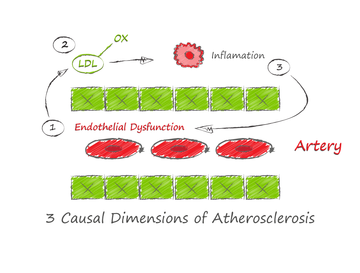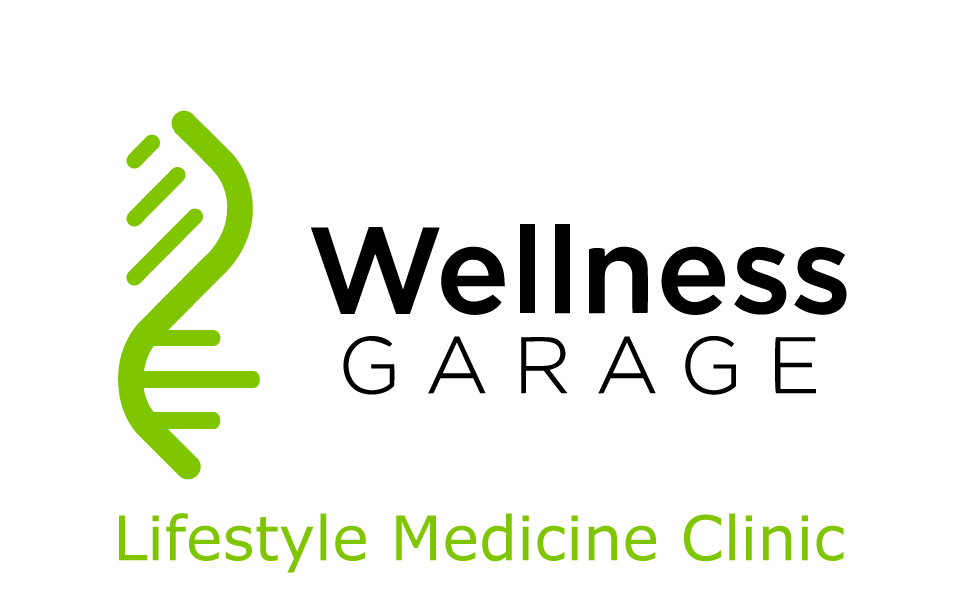|
Last week, we covered a lot of ground and got very technical. The etiology of atherosclerosis, the disease process underlying heart disease and stroke - the #1 cause of death and disability in Canada. There were a number of takeaways that are worth reiterating:
This week we will get very practical and provide a framework for understanding risk and treating, preventing or reversing atherosclerosis. The first objective is to understand your risk. Since atherosclerosis is a process involving:
The challenge is that we do not have perfect metrics, with enough evidence in relation to the hard outcomes of cardiac events to be definitive. Here we can rely on some evidence-based risk calculators, like Framingham, that are based on large datasets. These generally are a good place to start:
In my practice - I start with Framingham, but also try and gather more data to support my understanding of the three ingredients: Endothelial dysfunction - the biggest factors to consider are
Oxidized LDL:
Inflammation:
Testing allows us to understand risk at a personal level, from here, my objective is to align my patient’s behavior with optimizing and reducing the risk across the three dimensions of atherosclerosis causality. The first place to start is with weight management - bringing the patient to normal levels of BMI, body fat and most importantly visceral fat will improve blood pressure, decrease insulin resistance, improve endothelial function, improve lipoproteins by increasing HDL-C and decreasing LDL-p, and decrease inflammation. For weight management - we nutrition comes first. Whole foods, mostly plant-based. We adjust and refine depending on response on our key biomarkers. Next we increase exercise. Our first goal is to get people to 150 minutes of moderate to vigorous exercise. Nothing magic here - there is ample evidence to support this level of exercise as the minimal effective dose. We adjust exercise across three components - aerobic, functional movement and resistance training. Again we adjust and refine depending on response of the patient’s biomarkers. Inadequate sleep and chronic stress have both been shown to affect inflammation, immune response and endothelial function - so we need to have a strategy to get at least 7 hours of high quality sleep and reduce stress. At Wellness Garage - we create month personalized lifestyle behavior action plans that we call “Precision Health Tune-ups”. We reassess every 4 months, until we have optimized behavior and reduced risk. If we see a patient’s measures of endothelial function, LDL and inflammation come to optimal levels with lifestyle measures we feel very comfortable that we have reduced their risk. When risk remains, we are comfortable with using both specific supplements and drug therapies to normalize BP, address LDL-p and other key biomarkers - there is, we believe, enough evidence to support this approach. In every case - this is a personal risk reduction conversation. Drug treatments are used to lower the probability of clinical atherosclerosis and carry a risk of adverse drug reactions. How much risk is too much on either side (disease vs drug reaction) of this decision is very individual - and can only be decided by a very well informed patient. In summary, atherosclerosis is a systemic, almost ubiquitous disease process with three major causal dimensions.
The place to start is with a medical assessment that measures at a minimum the key biomarkers for each dimension. Know your numbers. With this baseline, you will have an understanding of how your genes and current behaviors are working for you. The next step is to optimize your behaviors - nutrition, exercise, sleep, stress tolerance all play a role. After several months of modified behaviors, checking to see your body’s response allows you to optimize your behaviors and reduce risk. If, despite optimal behavior change, your risk does not seem to come down - supplements and medications may help. This is something that you need to work through with your physician. At Wellness Garage - we take a precision health approach to atherosclerosis prevention, treatment and reversal, by working with our members throughout this process - Assess, Change Behaviors, Re-assess and Adjust. If you would like our help to take control of your health please books free consultation. |
AuthorDr. Brendan Byrne Categories
All
|

 RSS Feed
RSS Feed
